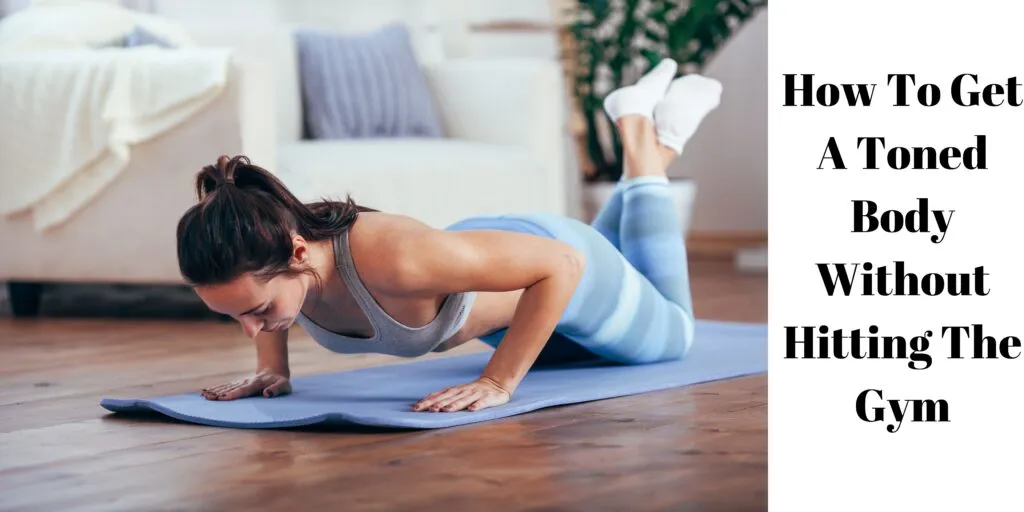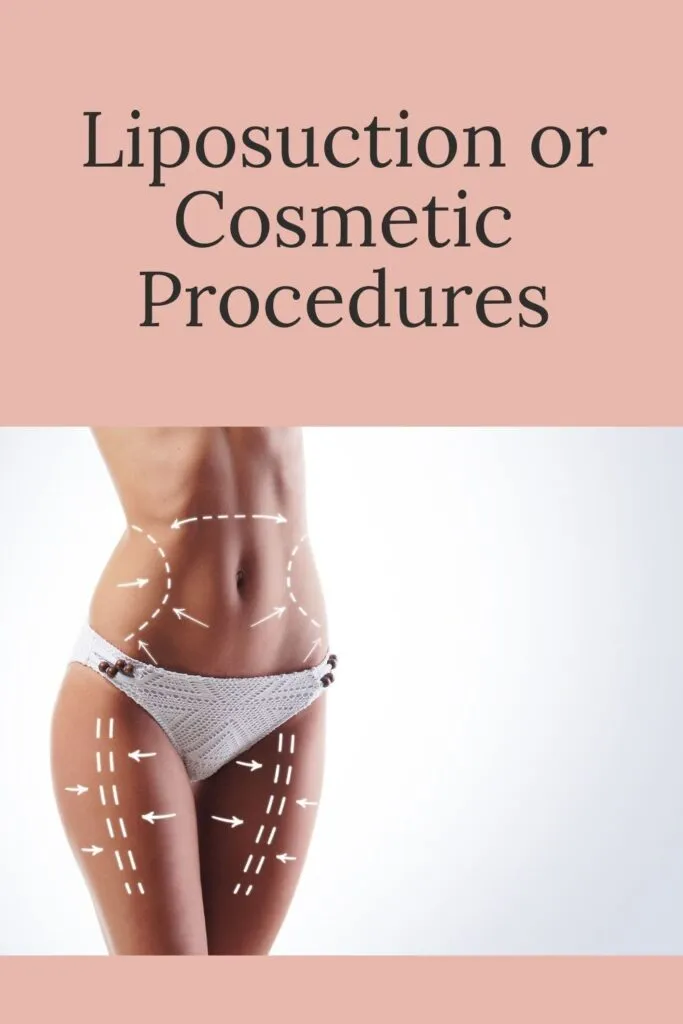Gyms are great places to build a body that’ll envy every fitness buff. However, not all people have the time or money (or sometimes both) to use one. Even if they have the time, they might not get as much gym time, especially when it’s packed. There’s also the consideration that the COVID pandemic’s far from over.
Fortunately, achieving such a body is still possible without a gym’s equipment and amenities. It wasn’t unusual for people to continue their fitness regimens in their homes amid the lockdowns. It only takes some thinking outside the box, sometimes searching beyond the gym for solutions.
Here are a few ways to get a toned body without hitting the
- Liposuction
Amid recent medical advances, diet and exercise are still the most effective way to lose weight and achieve the right body (more on these later). Nevertheless, experts aren’t quick to rule out cosmetic procedures such as liposuction. Read more to learn about Smart Lipo.
Liposuction can help remove fat that intense physical activity might not have burned off, namely visceral fat. For the record, this kind of fat sits too deep for any procedure to remove effectively. But as liposuction removes subcutaneous fat, which is just under the skin, visceral fat will take its place. Post-procedure diet and exercise can remove this batch of fat, as well.
Cosmetic surgeons employ one of three (or more) liposuction systems.
- Laser-assisted liposuction
Also known as laser lipolysis, laser-assisted liposuction uses laser energy to melt the fat cells in the targeted area. The procedure often uses neodymium-doped yttrium aluminum garnet (Nd-YAG) lasers set to wavelengths ranging between 920 nm and 1,440 nm. Each setting is ideal for specific situations, from rapid melting to effective skin tightening. (1)
The setting and approach to laser-assisted liposuction vary by cosmetic surgeon. That’s why asking the right questions before undergoing the procedure is crucial. You can visit this page and similar ones to know more about what makes them unique.
- Ultrasound-assisted liposuction (UAL)
A UAL uses sound waves set to ultrasound frequency to liquefy the fat cells in an area. The frequency depends on the type of UAL performed: external or internal.
External UAL involves holding a paddle-shaped instrument over the targeted area to deliver sound energy between 1 and 3 MHz. Meanwhile, internal UAL inserts a probe that’ll emit vibrations of around 225 kHz inside the body. (2)
- Tumescent liposuction
This tried-and-true procedure entails injecting a saline solution into a specific region. The fat cells in the area will absorb the solution, allowing the suction procedure to remove the fat with ease. The solution also contains some amount of local anesthesia, most typically epinephrine or lidocaine. (3)
- Balance of protein, carbs, and fats
As tempting as having every globule of fat siphoned out of the body sounds, multiple studies have shown that liposuction isn’t a long-term solution. The body will want to regain its lost fat. Hence, not following up with proper diet and exercise will undo all the gains that liposuction has given.
For some individuals, liposuction isn’t an option, let alone any of the procedures above. You can check this out for the requirements, but the gist is that a person’s weight must be within 30% of their ideal weight and not a smoker or heavy drinker.
Whether or not you’re undergoing liposuction, a proper diet is non-negotiable. It doesn’t even have to be the next dietary fad; according to dietitians, a delicate balance of protein, carbs, and fats will be more than enough. As for the right amount, one 2014 study estimates:
- Between 2.3 and 3.1 grams of protein per kg of lean mass
- Between 15% and 30% of calories should come from fat
- The remaining calories should come from carbs(4)
Moreover, dietitians state that the right kind of fat matters, so stuffing your mouth with fast food isn’t ideal. They recommend food rich in monounsaturated and polyunsaturated fats. Examples of the former are olive oil and avocados, whereas for the latter are sunflower oil and walnuts. In addition, eating fish at least twice or thrice a week can provide enough omega-3, a healthy fat crucial for heart health. (5)
As for carbs, they advise going for complex ones, such as whole grain and fruits and veggies. Most of these examples are also rich in dietary fiber, which does many wonders to the body. Also, as the body can’t break it down, fiber keeps one’s intake in check.
- Weightless strength training
When the U.S. entered lockdown in early 2020, gyms were among the affected establishments. Without access to weights and other gym equipment, people instead bought their own gear to continue working out at home. By mid-2020, the U.S. had, for lack of a better term, a “dumbbell shortage,” driving prices up.
Strength training need not be too costly, though. It’s possible to perform exercises with minimal to no equipment. For some exercises like step-ups and pull-ups, a sturdy box or a set of pull-up bands will suffice. Fitness experts recommend performing at least five or six of the following routines for adequate strength training (three sets per routine):
- Broad jumps (10 reps)
- Burpees (15 reps to start)
- Flutter kicks (20 reps)
- Mountain climbers (30 seconds)
- Plank reach-unders (20 taps)
- Pull-ups
- Push-ups
- Rotational jacks (12 to 15 reps)
- Split squats (12 reps per leg)
- Squat jumps (10 to 12 reps)
- Squat pulses (30 seconds)
- Standing side hops (20 reps)
- Step-ups (10 to 15 reps)
The lack of equipment may prove to be a challenge for some, all the more reason this workout is worth trying. That said, it’s essential to do adequate warmups and take these exercises slowly. A safe routine can yield the most gains possible.
Conclusion
As this piece has explained, achieving a toned body isn’t limited to the gym. The humble home alone holds plenty of opportunities to perform various exercises, not to mention at little to zero cost. A balanced meal of protein, fats, and carbs can help manage a healthy weight. Cosmetic procedures like liposuction are still viable for fats that can’t be removed via physical activity.
References:
- “Table 1: Laser lipolysis devices”, Source: https://www.ncbi.nlm.nih.gov/pmc/articles/PMC3140909/table/T1/
- “Chapter 29: Critique of Ultrasonic Liposuction”, Source: https://liposuction101.com/liposuction-textbook/chapter-29-critique-of-ultrasonic-liposuction/
- “Liposuction: What You Should Know”, Source: https://www.webmd.com/beauty/cosmetic-procedure-liposuction
- “Evidence-based recommendations for natural bodybuilding contest preparation: nutrition and supplementation”, Source: https://pubmed.ncbi.nlm.nih.gov/24864135/
- “Types of Fat”, Source: https://www.hsph.harvard.edu/nutritionsource/what-should-you-eat/fats-and-cholesterol/types-of-fat/


